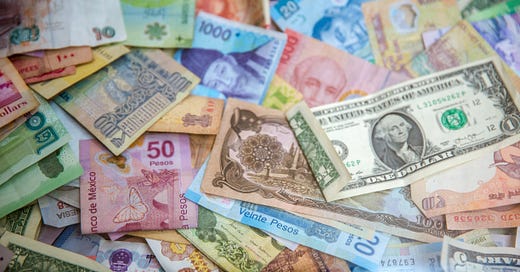My top 4 financial ratios to evaluate Dividend Stocks
Don't forget to analyze your dividend stocks using these critical ratios
Why invest in Dividend Stocks?
Dividend investing is a great way to earn passive income by investing in the stocks of well established companies in different industries.
Benefits of investing in dividend stocks
Earn a side income from dividends payed by the company
If the stock market goes down, you would still get returns via dividends
Decent capital appreciation
Are the dividends sustainable?
While looking for dividend stocks apart from looking at the general business health parameters like sales, net income, debt, etc. you need to analyze 4 ratios that tell you the following:
Business is sustainable
Company can afford the current dividend distributed
Company has the potential to increase its dividends in future
Company is not funding the dividends using debt
So, let’s dive in and see the ratios.
1. Dividend Payout Ratio
This ratio tells you the cash dividend payed out by a company from its net income.
The dividend payout ratio may be calculated as annual dividends per share (DPS) divided by earnings per share (EPS) or total dividends divided by net income.
Dividend Payout Ratio = Dividend per share (DPS) / Earnings per share (EPS)
For capital intensive businesses requiring a lot of capital expenditure every year, I prefer to see the dividend payed as a percentage of Free Cash Flow instead of net income. This is because net income does not take into account non-cash items and capital expenditure.
A dividend payout ratio more than 100% indicates the company is paying more in dividends than its net income.
Companies with high dividend payout ratios may have trouble maintaining their dividends over the long term.
Note: The above statement is invalid for REITs, as they are required by law to distribute 80-90% of their income as dividends.
Look for companies that distribute 50-75% of its income as dividends. This leaves some cash in the the company’s hand which can be used to fuel future growth.
2. Dividend Coverage Ratio
This ratio is basically the inverse of the payout ratio and shows the number of times a company could pay dividends to its common shareholders using its net income over 1 financial year.
A higher dividend coverage ratio is considered good because the company can pay more in dividends than it is currently paying.
Dividend Coverage Ratio = Earnings per share (EPS) / Dividend per share (DPS)
For example, a dividend coverage ratio of 2 means the company can pay its current dividend twice in 1 year.
By definition the minimum value of this ratio should be 1. A ratio of less than 1 indicates the company is paying more in dividends than its current net income.
3. Free Cash Flow to Equity (FCFE)
This ratio measures the amount of cash that could be paid out to shareholders after all expenses and debts have been paid.
The FCFE is calculated by subtracting debt repayment from free cash flow and adding net debt. Debt repayment can be found on cash flow from financing activities.
FCFE = Free cash flow - Debt Repayment + Net Debt
As an investor you want to see that a company's dividend payments are covered in full by FCFE.
If the dividends distributed are more than the FCFE, it means the dividends are funded by taking more debt.
4. Net Debt to EBITDA
This ratio measures a company's leverage and its ability to meet its debt.
A company with a lower ratio is considered more attractive. It should be measured against its industry average or similar companies,
It is calculated by dividing a company's total outstanding debt less cash and cash equivalents by its EBITDA.
Net Debt to EBITDA = Net Debt / EBITDA
If a dividend-paying company has a high net debt to EBITDA ratio that has been increasing over last several years, the ratio indicates that the company may cut its dividend in the future.
This is because the company will need to pay off its debt before it can pay the equity shareholders.
Summary
Dividend investing can be very rewarding as it provides passive income and if done consistently for a period of 5-10 years can eventually generate enough income to cover some regular expenses.
Do remember to check the 4 ratios outlined in this article whenever you are evaluating a company for your dividend portfolio.
Thank you for reading this article! If you liked it please hit the LIKE button.
Don’t forget to subscribe to get more such articles right in your Inbox. Subscription is FREE!
If you found this article useful, please consider sharing it.
I hope you got some value out of this article. Please feel free to share this newsletter with your friends or family.
Disclaimer: Please do not consider this post as an investment advice. I am not a registered financial advisor. Nothing in this article should be construed as an investment advice. Please consult a registered financial advisor before making any investment decisions.
Credits: Most of the content of this article is public information that can be found on news articles, government and company websites.




